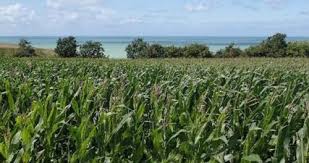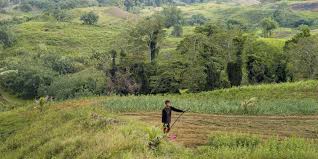Apart from the mentioned anthropogenic stresses, human interference with nature has other major implications. Large-scale destruction of natural habitats has caused large populations of many species to become fragmented, resulting in small ‘remnant’ populations that become increasingly isolated.
Subdivision of large populations in combination with limited gene flow between the fragments has significant ecological and genetic consequences.
Ecologically, habitat fragmentation will have demographic effects as small populations are progressively more affected by demographic and environmental stochasticity, greatly increasing their extinction probability.
Read Also: How to Grow, Use and Care for Whitetinge Sedge Grass (Carex albicans)
Genetic Consequences of Habitat Fragmentation in Agricultural Systems

From a population genetics perspective, small relatively isolated populations become increasingly subject to genetic drift and inbreeding, resulting in loss of genetic variation and a decrease in fitness, a process here referred to as genetic erosion.
Genetic drift will cause allele frequencies to fluctuate, which over time leads to random loss and fixation of alleles and an increase in homozygosity.
When selection coefficients are smaller than 1/2Ne, genetic drift becomes stronger than natural selection, and the variation is driven by the same dynamics as neutral genetic variation independent of whether the alleles have deleterious or beneficial effects on fitness (Kimura 1983:45).
On the other hand, deleterious alleles with large fitness effects, such as recessive lethals and detrimentals, will be effectively selected against and removed from the population when becoming homozygous (purging).
The probability of an allele becoming fixed through genetic drift equals its initial frequency. This means that rare alleles have the lowest probability to get fixed and thus the highest probability to get lost.
As most stress resistance alleles have generally low frequencies in populations under benign conditions, these would be easily lost from small populations, making them less able to adapt genetically when subjected to stresses.
Even though low-frequency deleterious alleles also would have a high probability to get lost by chance, still a significant proportion of these will get fixed as many loci carry mildly deleterious alleles: estimates for Drosophila are on the order of 5000 loci.
Because the force of genetic drift increases with decreasing population size, the potential to respond to natural selection will, in general, decrease with decreasing population size, even though this relation in practice will be confounded by selection and dispersal.
Read Also: How to Grow, Use and Care for Whitegrass (Leersia virginica)
Inbreeding and Its Impact on Agricultural Biodiversity

At the same time, in small isolated populations the inbreeding coefficient, f, increases over time as most parents will share ancestors (biparental inbreeding).
The detrimental effects of inbreeding, particularly in normally outbreeding species, are well documented and do increase the extinction probability of populations.
Inbreeding depression has not only been observed in captive, laboratory, and domestic species but also evidence for the occurrence of inbreeding depression in wild populations is accumulating. Moreover, inbreeding depression is often more severe in the wild compared to benign captive conditions.
Although the genetic basis of inbreeding depression is still under discussion, it is currently accepted to be mainly due to increased homozygosity for (partly) recessive, mildly deleterious alleles.
This would also explain why inbreeding depression is significantly greater for traits directly related to fitness (life-history traits) than for morphological traits, as the former exhibit more directional dominance (a prerequisite for the occurrence of inbreeding depression) while the latter show mostly additive gene action.
In short, whereas sufficient tolerance and levels of genetic variation are required for populations to cope with the ongoing deterioration of natural environments, fragmentation of habitats and the concomitant genetic erosion are expected to significantly impede adaptive responses.
In the following, the article focuses on the consequences of genetic drift, inbreeding, and inbreeding depression for adaptive responses and the persistence of biodiversity under stressful conditions.
Do you have any questions, suggestions, or contributions? If so, please feel free to use the comment box below to share your thoughts. We also encourage you to kindly share this information with others who might benefit from it. Since we can’t reach everyone at once, we truly appreciate your help in spreading the word. Thank you so much for your support and for sharing!

